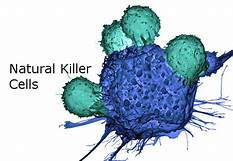Gratitude makes sense of our past, brings peace for today, and creates a vision for tomorrow
- Sheryl and Dan Malin

- Aug 9, 2020
- 6 min read
Updated: Sep 28, 2020
Hello Sunday,
Appreciation is a thank you or a recognition of something that someone has done for you. Words of appreciation can be used when you feel gratitude towards someone. This could include thanking someone for a gift, a favor, or just being a good friend. Your words of thanks don't have to be long and fancy as long as they are heartfelt.

Today Dan and I are so grateful and blessed to have been in the path of Dr. Garcia. For ten years we have been following him for our health issues with cancer.
He has taught Dan and I most of everything that I blog about regarding functional medicine and the root of the disease. He along with another Doctor, Dr. Perez have given Dan and I a second chance in living a quality life.

Make it a habit to tell people thank you. To express your appreciation, sincerely and without the expectation of anything in return.
Truly appreciate those around you, and you'll soon find many others around you.
Truly appreciate life, and you'll find that you have more of it. Ralph Marston
Yesterday blood was taken from Dan for cell therapy next week. The nurse states it takes two days for them to multiply the good cells. Getting ready for anti-Inflammatory treatments.

Dendritic cell (DC) therapy, also called dendritic cell vaccine. Dendritic cell (DC) therapy, also called dendritic cell vaccine. This is a newly emerging and potent form of immunotherapy used to treat cancer conditions.
In the case of cancer, dendritic cell therapy is an immunotherapy that harnesses the body's own immune system to fight cancer. The dendritic cell itself is an immune cell whose role is the recognition, processing, and presentation of foreign antigens to the T-cells in the effector arm of the immune system.

Although dendritic cells are potent cells, they are not usually present in adequate quantity to allow for a potent immune response. Dendritic cell therapy involves the harvesting of blood cells (such as monocytes or macrophages) from a patient and processing them in the laboratory to produce dendritic cells, which are then given back to a patient in order to allow massive dendritic participation in optimally activating the immune system.

Natural Killer Cells are a type of cytotoxic lymphocyte critical to the innate immune system. The role NK cellsMHC play is analogous to that of cytotoxic T cells. NK cells are unique; however, as they have the ability to recognize stressed cells in the absence of antibodies and MHC, allowing for much faster immune reaction.

Too often we underestimate the power of a touch, a smile, a kind word, a listening ear, an honest compliment, or the smallest act of caring, all of which have the potential to turn a life around. Leo Buscaglia

I blogged on this topic regarding - THE FUTURE WAY CANCER TREATMENTS ARE GOING ~
We need to look at the bigger picture. What is the best way for one to live a quality of life? People say they would never go to Mexico for treatment for they fear that it is not safe!! Has anyone watched the news in the states recently?
Nonsense, I went ten years ago and fell in love with the people and the culture. Yes, we went over to the other side and never regretted the decision Dan and I made. For nearly seven years we had made it our home along with our other family member Heckle our pet turtle. I have learned a lot of survival from him by the environment he lives in that we have provided for him. It’s the little things that matter from the space you live in, to the type of foods.
CONDUCT REVEALS CHARACTER
Hello Sunday💐Conduct reveals character and we best understand integrity when we see it lived out in a persons life🌻 have a wonderful day 🌼
Now let’s get into the treatments in United States compared with the treatments in the Mexico that I had. The pricing is different and it varies where you go in Mexico and it includes more than what is done in the United States. First, in the states it is per treatment (each time) compared in Mexico it is either per week or a package which includes education, stem cell, hyperthermia, your stay, food and any other type of functional medicine. The difference is the professionals trained in Functional Medicine are more educated in Mexico with treating the individual person then the disease itself.
Both in the United States and Mexico the treatment is not covered by most insurances for it is not FDA approved. However, we need to again look at the big picture. Look at the stats for the coming years at the prices for cancer treatments in the United States.
Posted, Sunday, September 4, 2016
Based on growth and aging of the U.S. population, medical expenditures for cancer in the year 2020 are projected to reach at least $158 billion (in 2010 dollars) — an increase of 27 percent over 2010, according to a National Institutes of Health analysis. If newly developed tools for cancer diagnosis, treatment, and follow-up continue to be more expensive, medical expenditures for cancer could reach as high as $207 billion, said the researchers from the National Cancer Institute (NCI), part of the NIH. The analysis appears online, Jan. 12, 2011, in the Journal of the National Cancer Institute.

The projections were based on the most recent data available on cancer incidence, survival, and costs of care. In 2010, medical costs associated with cancer were projected to reach $124.6 billion, with the highest costs associated with breast cancer ($16.5 billion), followed by colorectal cancer ($14 billion), lymphoma ($12 billion), lung cancer ($12 billion) and prostate cancer ($12 billion).
If cancer incidence and survival rates and costs remain stable and the U.S. population ages at the rate predicted by the U.S. Census Bureau, direct cancer care expenditures would reach $158 billion in 2020, the report said.
However, the researchers also did additional analyses to account for changes in cancer incidence and survival rates and for the likelihood that cancer care costs will increase as new technologies and treatments are developed. Assuming a 2 percent annual increase in medical costs in the initial and final phases of care — which would mirror recent trends — the projected 2020 costs increased to $173 billion. Estimating a 5 percent annual increase in these costs raised the projection to $207 billion. These figures do not include other types of costs, such as lost productivity, which add to the overall financial burden of cancer.
"Rising health care costs pose a challenge for policy makers charged with allocating future resources on cancer research, treatment, and prevention,” said study author Angela Mariotto, Ph.D., from NCI’s Surveillance Research Program.
“Because it is difficult to anticipate future developments of cancer control technologies and their impact on the burden of cancer, we evaluated a variety of possible scenarios."
To project national cancer expenditures, the researchers combined cancer prevalence, which is the current number of people living with cancer, with average annual costs of care by age (less than 65 or 65 and older). According to their prevalence estimates, there were 13.8 million cancer survivors alive in 2010, 58 percent of whom were age 65 or older. If cancer incidence and survival rates remain stable, the number of cancer survivors in 2020 will increase by 31 percent, to about 18.1 million. Because of the aging of the U.S. population, the researchers expect the largest increase in cancer survivors over the next 10 years to be among Americans age 65 and older.
"The rising costs of cancer care illustrate how important it is for us to advance the science of cancer prevention and treatment to ensure that we’re using the most effective approaches,” said Robert Croyle, Ph.D., director, Division of Cancer Control and Population Sciences, NCI. “This is especially important for elderly cancer patients with other complex health problems."
MAY YOUR COFFEE BE STRONGER ----
May your coffee be stronger than any challenges you face today ☕ But if not, remember: Don't throw your cup at anyone ☕ You need it for refills.
To develop their cost projections, the authors used average medical costs for the different phases of cancer care: the first year after diagnosis, the last year of life, and the time in between. For all types of cancer, per-person costs of care were highest in the final year of life. Per-person costs associated with the first year after a cancer diagnosis were more varied, with cancers of the brain, pancreas, ovaries, esophagus and stomach having the highest initial costs and melanoma, prostate and breast cancers having the lowest initial-year costs.
These new projections are higher than previously published estimates of direct cancer expenditures, largely because the researchers used the most recent data available — including Medicare claims data through 2006, which include payments for newer, more expensive, targeted therapies which attack specific cancer cells and often have fewer side effects than other types of cancer treatments.
In addition, by analyzing costs according to phase of care, which revealed the higher costs of care associated with the first year of treatment and last year of life (for those who die from their disease), the researchers were able to generate more precise estimates of the cost of care.
The researchers used 2005 incidence and mortality data from NCI's Surveillance, Epidemiology and End Results (SEER) program to estimate cancer prevalence for 2010 and 2020. Population estimates for the United States was obtained from the U.S. Census Bureau's National Interim Projections for 2006 to 2020. Medical cost estimates were obtained using the SEER-Medicare database which links SEER data to Medicare claims data from the Center for Medicare and Medicaid Services.

Until tomorrow, remember sometimes the best things are right in front of you; it just takes some time to see them.
























Comments